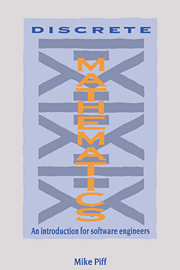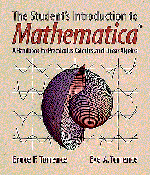Discrete Mathematics
Computing developed as a branch of mathematics, only to drift away from this home as computer science diverged towards more general topics such as the theory of how a computer works. Recently the emphasis has become more mathematical and the new disciplines of software engineering and information technology have emerged. This book is designed to form the basis of a one year course in discrete mathematics for first year computer scientists or software engineers. The material presented covers much of undergraduate algebra with a particular bias towards the computing applications. Topics covered include mathematical logic, set theory, finite and infinite relations and mappings, graphs, graphical algorithms and axiom systems. It concludes with implementations of many of the algorithms in Modula-2 to illustrate how the mathematics may be turned into concrete calculations. Numerous examples and exercises are included with selected solutions to the problems appearing in the appendix. Discrete mathematics is the basic language which every student of computing should take pride in mastering and this book should prove an essential tool in this aim.
- Concise and witty introduction to mathematics for computer science
- Taught in all computer science departments
- Though written by a mathematician, emphasises software engineering
- Compare with Cooke and Bez, published in 1984, now dying but has sold 4000 in pb in HEO (split: 2150, 350, 1500)
Product details
No date availablePaperback
9780521386227
332 pages
229 × 152 × 19 mm
0.49kg
Table of Contents
- 1. Introduction
- 2. Logic
- 3. Set theory
- 4. Relations
- 5. Mappings
- 6. Graphs
- 7. Graph algorithms
- 8. Abstract algebra
- Appendices.








